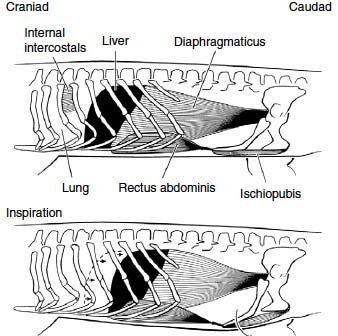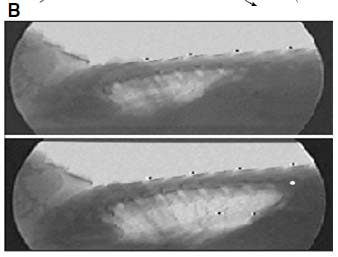Illustration of some of the major anatomical features associated with ventilation in crocodilians Expiration is produced by caudal rotation of the ribs through contraction of the internal intercostals and constriction of the abdominal cavity, which produces a cranial translation of the viscera. Constriction of the abdomen results from activity of the transversus abdominis muscle and the rectus abdominis muscle, which rotate the pubes and gastralia dorsally. Inspiration is produced by cranial rotation of the ribs and caudal translation of the viscera. The viscera, including the large stomach, are pulled caudad by contraction of the diaphragmaticus muscle. The ischopubis muscles increase the abdominal volume by rotating the pubes and gastralia ventrally. |
|---|
X-ray picture illustrating the degree to which the lung is displaced during an inspiration |

